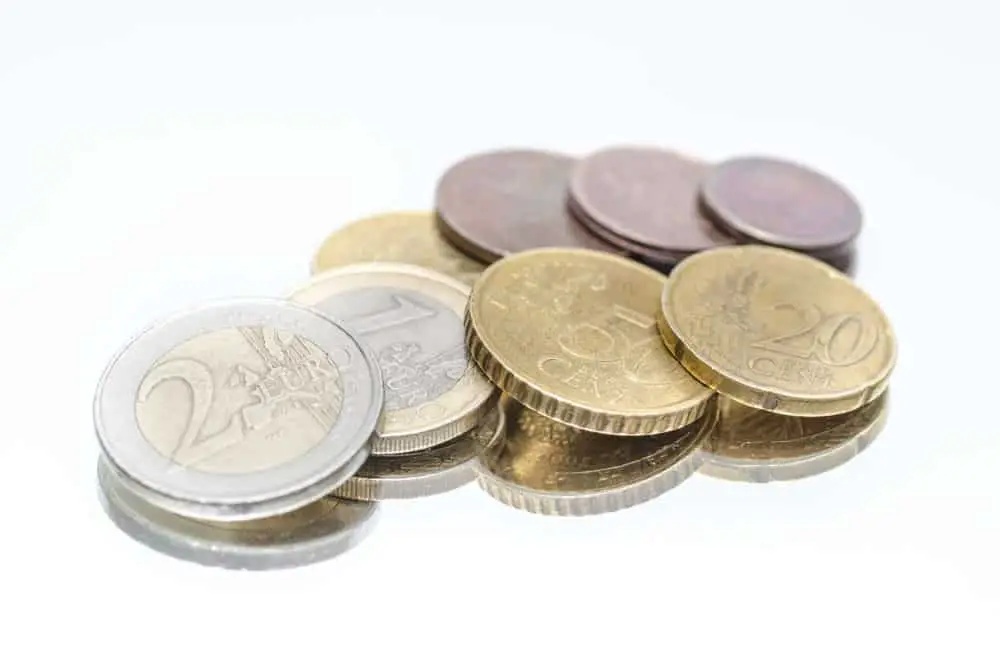Table of Contents
What do silver, gold, and platinum have in common? They’re all precious metals; valuable substances that contain plenty of clout in investment circles and plenty of allure in the realm of fine jewelry and extravagant décor. These metals have had some serious drawing power practically since they were discovered, and they show no signs of ever losing their significant financial allure.
*This post may contain affiliate links. As an Amazon Associate we earn from qualifying purchases.
Their status and symbolism beg several questions. These inquires not only revolve around why they’re so synonymous with value, but they’re also linked to ways in which one can acquire them and determining their worth once they’ve been purchased. Considering their gravitas, these seem important questions to answer.
This overview seeks to answer these crucial questions by examining the origins of precious metals and their presence in an ever-fluctuating marketplace. Ultimately, the guide may inspire you to invest in a little treasure of your own.
The Big Five
There are several substances that can rightfully claim to be precious metals. Some of these metals in this category include rhodium, iridium, ruthenium, and osmium. When the term precious metals are bandied about in conversation, it’s typically in reference to five specific metals:
- Gold
- Silver
- Platinum
- Palladium
- Titanium
From an investment standpoint, palladium and titanium rarely if ever come up in conversation, as their worth has long been linked to various forms of manufacturing in conjunction with a host of different objects, from cars and submarines to joint replacements and hydrogenation reaction catalysts.
What Makes Them Precious?
The main reason a metal gets deemed as precious is due to rarity. The scarcity helps dictate certain precious metal prices on the market, and it varies from element to element. However, there are other components that remain consistent within the precious metal genre. Some of these similarities include:
- Reactivity – Precious metals tend to have lessened reactive properties compared to non-precious elements, such as noble metals.
- Ductility and Malleability – Precious metals tend to be more receptive to deforming manipulation. This quality makes it easy to create stunning pieces of jewelry or sturdy equipment.
- Luster – Precious metals tend to have shiny surfaces – a key element in forming certain precious metals’ symbol of elegance.
A Brief History of Precious Metals
The timeline of precious metal discovery practically goes back to the recording of history. Archaeologists have traced evidence of gold dating as far back as 40,000 B.C. Gold’s history as a financial influencer and symbol of wealth traces back to about 3,000 B.C., where the Egyptians practically built their civilization on the substance.
Silver’s influence also goes back to that period. The first instances of silver mining are believed to take place by early civilizations in modern-day Turkey. Silver and silver mining also played a key role in the development of the New World.
The discovery of platinum, palladium, and titanium don’t go nearly back as far – they were all discovered after the New World was found. Unlike silver and gold, platinum’s status as a symbol of wealth has fluctuated, mainly because it has so many practical uses. The latter two elements were never prized monetarily for their scarcity.
The history of silver and gold tie directly to their respective modern status as tradeable commodities. The Egyptians prized gold so much, they produced the first known currency exchange ratio. The substance the built the ratio around was silver – they surmised that one piece of gold was equal to two and a half pieces of silver. This ratio was strong enough to establish gold’s superior value to silver – something that exists to this day.
Metals and Investments
Precious metals, particularly gold, has been pegged as smart investments since the days of Egypt. In modern times, they’ve been looked upon by many as vital components for long-term investments. The numbers back this up: In 1970, an ounce of gold was priced at $35. Forty years later, that same ounce’s value skyrocketed to $2,000 per ounce.
Like any other investment, precious metals aren’t necessarily looked upon a get-rich-quick scheme. Gold’s dramatic ascension in price took nearly half-a-century in the making, and there were dips and dives along the way. If you’re looking for short-term gain, this may not be the best route for you.
However, precious metals are still considered a terrific investment for the long-term investor. For one thing, they carry strong intrinsic value, so what you see is what you get. They also carry no credit risk, nor can they be inflated because they’re a natural element.
How Does Precious Metal Investing Work?
Investing in precious metals is unique compared to other investments because you’re dealing with a physical commodity rather than something that’s printable. This gives the purchasing of precious metals a few unique rules. For instance, you can participate in the precious metal game by purchasing a physical chunk, buying futures contracts for the metal of your choosing, or purchasing shares in a publicly traded company that’s engaged in precious metals.
When they’re bought as part of an investment strategy, precious metals are typically done so as a stabilizing unit; one that acts as a hedge against volatile situations like inflation or recessions. This re-enforces their status as an investment built for long-term strategies.
What’s Bullion?
When you start looking into buying physical forms of precious metal like gold or silver, the word bullion will start showing up all over the place. If the only knowledge of that word comes from cubes designed for soup broth, this could be confusing. But it’s a rather simple term once you’re familiar with what it means.
Bullion is gold and silver that’s officially deemed a minimum of 99.5% pure. It’s either in the form of bars or cast into a transportable and processable shape known as an ingot. Bullion is recognized as legal tender.
The fact that precious metals can be transformed into transportable pieces as led to the proliferation of the precious metal design market, an intriguing if not fun peripheral component to investments. Companies such as Monarch Precious Metals sell handcrafted pieces of gold and silver that are physical assets like bars, but with one vital exception – they look significantly cooler.
Since you’re technically buying an asset from these companies, the prices fluctuate based on the way the precious metals are performing on the market. Design companies will use spot pricing – that is, the price of the commodity at a specific time – to set their prices. Because we live in an online world, this means the prices could change frequently.
How do I Store My Precious metal?
If you have a hunk of gold or silver in your home, it may become easy to get consumed by worry over its presence. Thankfully, you don’t have to worry about putting it in a super-secret location in your attic.
Your best bet may be to put your gold or silver into a precious metals depository, a third-party storage facility designed to hold bullion for customers. On paper, precious metals depositories act like safety deposit boxes in a bank. Dig a little deeper, however, and you’ll see differences.
For one thing, precious metals depositories tend to have a higher level of security, as they are highly guarded venues with perpetual surveillance, restricted entrance, and monitored activity at every turn. Plus, customers can access their investment at any time, something that can’t be said for a safety deposit box.
I Have a Hunk of Precious Metal. What Do I Do?
It’s not far-fetched to think that you may find yourself in possession of a precious metal one day. Remember, that gaudy piece of gold jewelry you inherited doesn’t necessarily have to stay gaudy. If this occurs, the question may arise – how much is it worth?
Your first step to answering this question is to locate a precious metals calculator. There are several calculators online that can help you determine the value of your piece, provided that you give it two metrics:
- Weight
- Purity
Once you have these elements in place, the calculators will be able to produce an accurate amount of worth, relative to the spot value of the metal. Since the Internet is an international community, most calculators will have the capacity to convert this amount into multiple currencies.
Conclusion
Precious metals are precious because of their rarity, not to mention other physical properties such as shine and malleability. Just as it was in the days of the Egyptians, they can be a power symbol of wealth. In these modern times, they can also be essential components of a strong, diversified investment strategy.
It may be intimidating to deal with precious metals if you’re not initiated. However, once you learn the ins and outs of precious metals investing and handling, this fear factor drops substantially. When you get to this point, you’ll find the world of precious metals to be something far prettier than its face value. You’ll discover it can be a steadying factor that can help your portfolio stay strong and grounded even during the most tumultuous times. And that’s rather precious.

